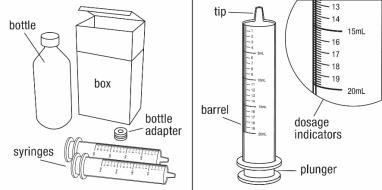FDA records indicate that there are no current recalls for this drug.
Are you a medical professional?
Trending Topics
Fycompa Recall
Get an alert when a recall is issued.
Questions & Answers
Side Effects & Adverse Reactions
There is currently no warning information available for this product. We apologize for any inconvenience.
Legal Issues
There is currently no legal information available for this drug.
FDA Safety Alerts
There are currently no FDA safety alerts available for this drug.
Manufacturer Warnings
There is currently no manufacturer warning information available for this drug.
FDA Labeling Changes
There are currently no FDA labeling changes available for this drug.
Uses
FYCOMPA is indicated as adjunctive therapy for the treatment of partial-onset seizures with or without secondarily generalized seizures in patients with epilepsy 12 years of age and older.
FYCOMPA is indicated as adjunctive therapy for the treatment of primary generalized tonic-clonic seizures in patients with epilepsy 12 years of age and older.
History
There is currently no drug history available for this drug.
Other Information
FYCOMPA tablets contain perampanel, a non-competitive AMPA receptor antagonist. Perampanel is described chemically as 2-(2-oxo-1-phenyl-5-pyridin-2-yl-1,2-dihydropyridin-3-yl) benzonitrile hydrate (4:3).
The molecular formula is C23H15N3O • 3/4H2O, and the molecular weight is 362.90 (3/4 hydrate). The chemical structure of perampanel is:
Perampanel is a white to yellowish white powder. It is freely soluble in N-methylpyrrolidone, sparingly soluble in acetonitrile and acetone, slightly soluble in methanol, ethanol and ethyl acetate, very slightly soluble in 1-octanol and diethyl ether, and practically insoluble in heptane and water.
FYCOMPA (perampanel) tablets are round, bi-convex, film-coated tablets containing 2 mg, 4 mg, 6 mg, 8 mg, 10 mg, or 12 mg of perampanel. Tablets contain the following inactive ingredients: lactose monohydrate, low substituted hydroxypropyl cellulose, povidone, microcrystalline cellulose, magnesium stearate, hypromellose, polyethylene glycol, talc, and titanium dioxide. Tablets of different strengths also may contain yellow ferric oxide (10 mg and 2 mg), red ferric oxide (2 mg, 4 mg, 6 mg, 8 mg), black ferric oxide (8 mg), and FD&C blue # 2 indigo carmine aluminum lake (10 mg and 12 mg).
Sources
Fycompa Manufacturers
-
Eisai Inc.
![Fycompa (Perampanel) Kit Fycompa (Perampanel) Tablet [Eisai Inc.]](/wp-content/themes/bootstrap/assets/img/loading2.gif)
Fycompa | Eisai Inc.
![Fycompa (Perampanel) Kit Fycompa (Perampanel) Tablet [Eisai Inc.] Fycompa (Perampanel) Kit Fycompa (Perampanel) Tablet [Eisai Inc.]](/wp-content/themes/bootstrap/assets/img/loading2.gif)
2.1 Dosage for Partial-Onset SeizuresIn patients not receiving concomitant enzyme-inducing antiepileptic drugs (AEDs), the recommended starting dosage of FYCOMPA is 2 mg once daily taken orally at bedtime. Increase dosage by increments of 2 mg once daily no more frequently than at weekly intervals.
The recommended maintenance dose range is 8 mg to 12 mg once daily in the absence of enzyme-inducing AEDs, although some patients may respond to a dose of 4 mg daily. A dose of 12 mg once daily resulted in somewhat greater reductions in seizure rates than the dose of 8 mg once daily, but with a substantial increase in adverse reactions. Individual dosing should be adjusted based on clinical response and tolerability [see Clinical Studies (14)].
2.2 Dosage for Primary Generalized Tonic-Clonic SeizuresIn patients not receiving concomitant enzyme-inducing AEDs, the recommended starting dosage of FYCOMPA is 2 mg once daily taken orally at bedtime. Increase dosage by increments of 2 mg once daily no more frequently than at weekly intervals.
In patients not taking enzyme-inducing AEDs, the recommended maintenance dose is 8 mg once daily taken at bedtime. Patients who are tolerating FYCOMPA well at 8 mg once daily and require further control of seizures may benefit from a dose increase up to 12 mg once daily if tolerated. Individual dosing should be adjusted based on clinical response and tolerability [see Clinical Studies (14)].
2.3 Dosing in the Presence of Concomitant Enzyme-Inducing Antiepileptic Drugs (AEDs)Enzyme-inducing AEDs, including phenytoin, carbamazepine, and oxcarbazepine, cause a 50-67% reduction in FYCOMPA plasma levels [see Drug Interactions (7.2), Clinical Pharmacology (12.3)]. In patients receiving concomitant enzyme-inducing AEDs, the recommended starting dosage of FYCOMPA is 4 mg once daily taken orally at bedtime.
Increase dosage by increments of 2 mg once daily no more frequently than at weekly intervals. A maintenance dose has not been established in clinical trials. The highest dose studied in patients on concomitant enzyme-inducing AEDs was 12 mg once daily. Individual dosing should be adjusted based on clinical response and tolerability.
When enzyme-inducing AEDs are introduced or withdrawn from a patient’s treatment regimen, the patient should be closely monitored for clinical response and tolerability. Dose adjustment of FYCOMPA may be necessary.
2.4 Dosage Adjustment in Patients with Hepatic ImpairmentIn patients with mild and moderate hepatic impairment, the starting dose of FYCOMPA is 2 mg once daily. Increase dosage by increments of 2 mg once daily no more frequently than every 2 weeks. The maximum recommended daily dose is 6 mg for patients with mild hepatic impairment and 4 mg for patients with moderate hepatic impairment. FYCOMPA is not recommended for use in patients with severe hepatic impairment [see Use in Specific Populations (8.6), Clinical Pharmacology (12.3)].
2.5 Dosage Information for Patients with Renal ImpairmentFYCOMPA can be used in patients with moderate renal impairment with close monitoring. A slower titration may be considered, based on clinical response and tolerability. FYCOMPA is not recommended in patients with severe renal impairment or patients undergoing hemodialysis [see Use in Specific Populations (8.7), Clinical Pharmacology (12.3)].
2.6 Dosage Information for Elderly PatientsIn elderly patients, increase dosage no more frequently than every 2 weeks during titration [see Use in Specific Populations (8.5)].
Login To Your Free Account


